Welcome to our Cavalier King Charles Spaniel dog breed profile, the perfect place to discover more about this enchanting and aristocratic breed that has captured hearts worldwide.
Cavalier King Charles Spaniels, often simply referred to as Cavaliers or Cavalier dogs, is a small breed of dog with a rich history dating back to the royal courts of England.
Recognizable by their expressive, soulful eyes and silky, feathered coat, Cavaliers come in a variety of colors. They possess a combination of regal grace and endearing personality that makes them an irresistible choice for dog lovers looking for a devoted and loving companion.
Cavalier Dog Breed Facts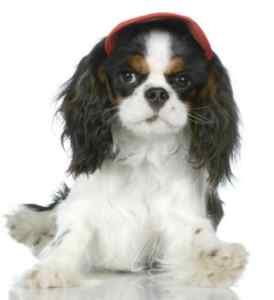
- Country of Origin: United Kingdom
- Breed Group: Toy (AKC)
- Height: Approximately 12-13 inches at the shoulder
- Weight: 13-18 pounds
- Lifespan: 12-15 years
- Average Price: Generally between $1,000 and $3,500
- Hypoallergenic: No
- Shedding: Moderate
- Good with Kids: Yes, excellent with children
Cavalier Dog Breed History
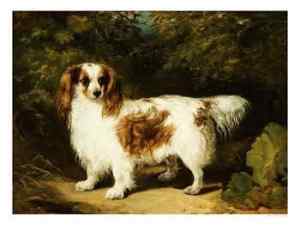 The Cavalier King Charles Spaniel, often simply called a Cavalier, is a breed of small spaniel classed in the toy group of The Kennel Club and the American Kennel Club. This breed is known for its affectionate nature, elegant appearance, and its rich history that dates back to the 17th century.
The Cavalier King Charles Spaniel, often simply called a Cavalier, is a breed of small spaniel classed in the toy group of The Kennel Club and the American Kennel Club. This breed is known for its affectionate nature, elegant appearance, and its rich history that dates back to the 17th century.
The Cavalier’s ancestors were small spaniels favored by royalty and nobility in Europe, particularly in England, where they became a favored companion of the court, especially during the reign of King Charles II, who was so fond of his spaniels that they were said to be allowed anywhere in the court, including in the Houses of Parliament.
This royal connection is where the breed’s name originates, as the dogs came to be associated with the cavalier King Charles.
Over time, the appearance of these spaniels changed as they were interbred with other breeds, such as the Pug, to create a dog with a shorter snout and domed head, which was popular in the Victorian era. This resulted in the development of what is known today as the King Charles Spaniel.
However, in the 1920s, an American named Roswell Eldridge offered prize money during a Crufts Dog Show in London to any person exhibiting King Charles Spaniels with long noses similar to the dogs depicted in historic paintings. His aim was to revive the older style of King Charles Spaniel that had been prevalent during the time of King Charles II. This led to a renewed interest in the breed and the eventual development of what we now recognize as the Cavalier King Charles Spaniel, which was recognized as a separate breed from the King Charles Spaniel by many kennel clubs in the 1940s.
Today, the Cavalier King Charles Spaniel is celebrated for its expressive, large, dark eyes and its silky coat which comes in four recognized color patterns: Blenheim (chestnut and white), tricolor (black/white/tan), black and tan, and ruby (rich red).
Despite their royal roots, Cavaliers are adaptable and can thrive in various living situations. They are known for their gentle and affectionate demeanor, making them excellent companion animals and family pets.
Although they maintain an air of nobility and elegance, they are also playful and enjoy participating in dog sports such as obedience and agility. The breed’s popularity has continued to grow, and it has won over many admirers with its sweet nature and graceful appearance, but they are also prone to certain health issues that potential owners should be aware of before bringing a Cavalier into their home.
Cavalier King Charles Spaniel Personality
Cavaliers are known for their affectionate nature and undying loyalty to their families. They thrive on human interaction and can suffer from separation anxiety if left alone for long periods.
Their gentle and patient character makes them excellent companions for children and the elderly alike. Cavaliers are also known to be friendly with strangers and other pets, making them poor guard dogs but excellent family pets.
Cavalier King Charles Spaniel Appearance
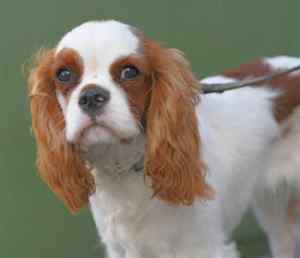 What do Cavalier dogs look like? Cavalier King Charles Spaniels are a toy dog breed admired for their elegant appearance and amiable temperament. With their large, round, and expressive eyes, they often appear to be gazing at their owners with a depth of affection and interest.
What do Cavalier dogs look like? Cavalier King Charles Spaniels are a toy dog breed admired for their elegant appearance and amiable temperament. With their large, round, and expressive eyes, they often appear to be gazing at their owners with a depth of affection and interest.
Their sweet, gentle expression is a hallmark of the breed, capturing the hearts of many dog lovers. Cavaliers radiate a certain aristocratic grace, but their demeanor is warm and approachable. The breed’s history is steeped in British nobility, which is reflected in their regal yet charming appearance.
The coat of the Cavalier King Charles Spaniel is silky and relatively easy to maintain, requiring regular grooming to keep it in good condition. The medium-length fur adds to their sophisticated look and provides a softness that enhances their appeal as a cuddly companion.
Cavaliers are known for their beautiful color varieties, with the Blenheim pattern being particularly iconic: rich chestnut markings well broken up on a pearly white background. The tricolor presents an eye-catching combination of black, white, and tan, while the ruby Cavaliers boast a luxurious, solid red coat. The black and tan variety is equally striking, with its glossy black fur accented with rich tan markings over the eyes, on the cheeks, and beneath the tail.
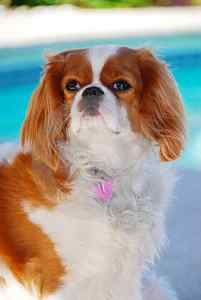 The breed’s long, feathered ears frame their endearing face and contribute to their overall elegant appearance. These ears are one of the breed’s most distinctive features and require regular attention to ensure they remain clean and healthy.
The breed’s long, feathered ears frame their endearing face and contribute to their overall elegant appearance. These ears are one of the breed’s most distinctive features and require regular attention to ensure they remain clean and healthy.
The Cavalier’s tail, typically left in its natural state, is an indicator of their mood and energy level, wagging enthusiastically during play or when greeting their beloved humans.
This breed is known for its constant tail motion, a sign of their friendly and outgoing nature. Whether they’re prancing around in the park or snuggling up on the couch, the Cavalier King Charles Spaniel’s appearance and personality make them an ideal pet for those seeking both a regal companion and a loving friend.
Cavalier King Charles Spaniel Health Concerns
Cavaliers are generally healthy, but like all breeds, they are prone to certain health conditions. Regular veterinary checks are crucial to monitor their health.
Common Health Issues
- Mitral Valve Disease (MVD): A heart condition that is common in the breed, often developing as they age.
- Syringomyelia (SM): A serious condition where cavities or cysts form within the spinal cord near the brain. It can be painful and is commonly seen in this breed.
- Hip Dysplasia: Although more common in larger breeds, Cavaliers can suffer from this malformation of the hip joint.
- Eye Conditions: Including cataracts and progressive retinal atrophy, which can lead to blindness.
Exercise Needs
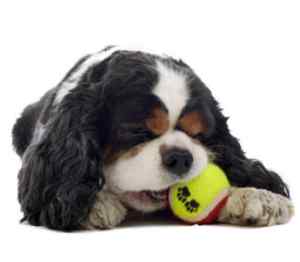 Despite their small stature, Cavalier King Charles Spaniels are endowed with a surprising amount of energy that belies their delicate appearance. This breed possesses a moderate energy level that demands regular physical activity to stay healthy and content. Daily walks serve as the perfect outlet for their energy, providing both physical exercise and mental stimulation.
Despite their small stature, Cavalier King Charles Spaniels are endowed with a surprising amount of energy that belies their delicate appearance. This breed possesses a moderate energy level that demands regular physical activity to stay healthy and content. Daily walks serve as the perfect outlet for their energy, providing both physical exercise and mental stimulation.
Alongside these walks, playtime is crucial for Cavaliers as it not only helps to keep them fit but also strengthens the bond between dog and owner. Given their sociable and affectionate nature, Cavaliers relish the opportunity to spend quality time with their human companions, engaging in various games and activities that encourage them to run, jump, and frolic, thus satisfying their exercise needs.
Maintaining the health and happiness of a Cavalier King Charles Spaniel goes beyond just meeting their physical exercise requirements; it also involves catering to their keen intelligence and desire for companionship. These dogs delight in interactive activities that allow them to connect with their owners. Such engagement can include fetch, hide-and-seek with toys, or even simple training exercises that challenge their minds.
Cavaliers are known for their eagerness to please, which makes them excellent candidates for more structured canine sports. These activities not only provide them with the necessary physical exertion but also offer the mental enrichment that is essential for this bright and alert breed.
Cavalier King Charles Spaniels are particularly well-suited to participating in canine sports such as agility and obedience training. Agility courses offer a dynamic environment where they can showcase their nimbleness and speed, navigating through obstacles and jumps that keep their interest piqued.
Obedience training, on the other hand, taps into their desire to work closely with their owners and their ability to learn quickly. Both activities are rewarding for Cavaliers, as they provide a sense of purpose and accomplishment, as well as building a deeper rapport with their handlers. Moreover, these sports are an excellent way to socialize Cavaliers with other dogs and people, contributing to their well-rounded nature and helping to prevent the development of undesirable behaviors stemming from boredom or lack of stimulation.
Cavalier King Charles Spaniel Training and Behavior
Cavaliers are eager to please and respond well to positive reinforcement training methods such as treats and praise. They are intelligent and learn quickly, but they can be sensitive, so gentle guidance is best. Early socialization and puppy training classes are recommended to help them develop into well-adjusted adults.
Cavalier Dog Grooming Needs
Cavalier King Charles Spaniels, affectionately known as Cavaliers, are a beloved toy breed known for their gentle disposition and beautiful, flowing coats. Their grooming needs are moderate but require regular attention to ensure that these elegant canines maintain their charming appearance and good health.
The Cavalier’s coat is medium in length, silky, and often slightly wavy, with feathering on the ears, chest, legs, and tail. This breed does not have an undercoat, which reduces the amount of shedding compared to double-coated breeds; however, it also means that they can get cold easily in harsh weather, making regular grooming essential for more than just aesthetic reasons.
Routine grooming for a Cavalier should include weekly brushing to remove loose hair and prevent tangles and mats, particularly in the feathered areas. It is important to use a soft-bristle brush or a slicker brush designed for long-haired breeds to gently work through any knots. Regular brushing not only keeps the coat shiny and healthy but also provides an opportunity to check for skin issues or parasites, such as fleas and ticks. In addition to brushing,
Cavaliers need their ears checked and cleaned regularly to prevent infections, as their long, floppy ears can trap moisture and debris. Bathing should be done as needed – typically every few weeks or when the dog becomes dirty – using a mild dog shampoo to preserve the coat’s natural oils.
Trimming is also a part of the Cavalier’s grooming routine. The hair on their feet, known as the “slippers,” should be trimmed to prevent matting and to keep debris from getting caught in their paws. Many owners choose to trim the feathering on the ears, tail, and legs to reduce maintenance and give a tidier appearance; however, this is a matter of personal preference and is not strictly necessary for the dog’s well-being.
Professional groomers can assist with these tasks if an owner is not comfortable performing them. Nail clipping is crucial to avoid overgrowth, which can lead to discomfort and structural issues. Dental care should not be overlooked either; regular teeth brushing will help prevent periodontal disease, which is common in smaller breeds. Overall, while Cavalier King Charles Spaniels do have specific grooming needs, with regular care, they remain one of the most striking and well-loved companions for families and individuals alike.
Caring for Your Cavalier King Charles Spaniel
Cavalier King Charles Spaniels are a toy breed renowned for their affectionate nature and graceful demeanor. As the owner of a Cavalier, it’s essential to prioritize their health and happiness through attentive care.
These dogs crave companionship and thrive in environments where they can be close to their human family. To keep them content, engage in regular playtime and ensure they are part of daily activities, as isolation can lead to anxiety and depression in this breed.
Alongside emotional care, Cavaliers require a well-balanced diet suited to their size and energy level. Since they are prone to obesity, it’s important to monitor their food intake and avoid overfeeding. Regular vet check-ups are also crucial to manage any breed-specific issues such as heart conditions or eye problems.
Grooming is another aspect of caring for your Cavalier King Charles Spaniel that should not be overlooked. They possess a beautiful, flowing coat that requires regular brushing to prevent mats and tangles, particularly behind the ears and under the arms.
Bathing should be done as needed, but not so frequently as to strip the natural oils from their coat. Dental hygiene is also paramount since small breeds are susceptible to dental issues; regular brushing of their teeth can help prevent periodontal disease.
Additionally, their long ears should be checked weekly for signs of infection, and their nails kept trimmed to prevent discomfort while walking.
Exercise is vital for the physical and mental well-being of your Cavalier. Despite their small size, they have a moderate energy level and enjoy walks, games of fetch, and interactive play sessions. Exercise not only helps maintain a healthy weight but also provides mental stimulation and helps to prevent behavioral problems.
It’s important to tailor the activity level to the individual dog, as some Cavaliers may have inherited health problems such as mitral valve disease, which could limit their tolerance for exercise. Additionally, because they are a brachycephalic dog breed, they should not be exposed to extreme temperatures or overexertion. With thoughtful care, regular veterinary attention, and lots of love, your Cavalier King Charles Spaniel can lead a joyful and fulfilling life as a cherished member of your family.
5 Frequently Asked Questions About Cavalier King Charles Spaniels
- Are Cavalier King Charles Spaniels good for apartment living? Yes, their small size and moderate energy level make them excellent pets for apartment dwellers.
- Do Cavalier King Charles Spaniels get along with other pets? Typically, yes. They are sociable animals that usually get along well with other dogs and even cats.
- How often do Cavalier King Charles Spaniels need to be groomed? Weekly brushing is recommended, along with regular ear cleaning and nail clipping.
- Are Cavaliers easy to train? Yes, they are known for their intelligence and eagerness to please, which makes them relatively easy to train.
- What is the most important thing to know about owning a Cavalier King Charles Spaniel? They need a lot of companionship and should not be left alone for long periods of time.
Is the Cavalier King Charles Spaniel the Right Breed for You?
Deciding whether the Cavalier King Charles Spaniel is the right breed for you involves considering several factors, including your lifestyle, living arrangements, and what you’re looking for in a canine companion.
Cavaliers are known for their affectionate and friendly nature, making them excellent family pets who thrive on human interaction. They are small dogs, typically weighing between 13 to 18 pounds, which makes them a suitable choice for apartment living or for those with smaller homes.
However, they do require regular exercise to maintain their health and happiness. Daily walks and playtime are essential to keep these energetic pups content. Their sociable temperament makes them great companions for children and the elderly alike, and they tend to get along well with other pets.
On the grooming front, Cavalier King Charles Spaniels have beautiful, flowing coats that come in a variety of colors, including Blenheim (chestnut and white), tricolor, black and tan, and ruby. Their long fur requires regular brushing to prevent matting and to keep it looking its best.
Owners should be prepared for routine grooming sessions and occasional visits to a professional groomer. Additionally, the breed is predisposed to certain health issues, such as mitral valve disease, syringomyelia, and hip dysplasia. Responsible breeding practices are helping to reduce the prevalence of these conditions, but prospective owners should be aware of the potential for long-term medical care and associated costs.
In summary, the Cavalier King Charles Spaniel can be a delightful addition to the right home. Prospective owners should consider their ability to provide ample attention, exercise, and grooming care that these dogs require.
Those willing to invest the time and love will find that Cavaliers are incredibly loyal, loving pets that can offer years of companionship. It’s important to research the breed thoroughly and consider adopting from reputable breeders or rescue organizations that can offer health clearances and support throughout the dog’s life. If your lifestyle aligns with the needs of this charming breed, a Cavalier King Charles Spaniel could indeed be the perfect furry friend for you.
Further Reading About the Cavalier King Charles Spaniel Dog Breed
Also included in our guide:
Be sure to check out the many additional breed profiles listed on our Small Dog Breeds A to Z home page.
